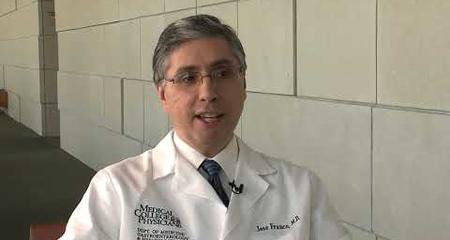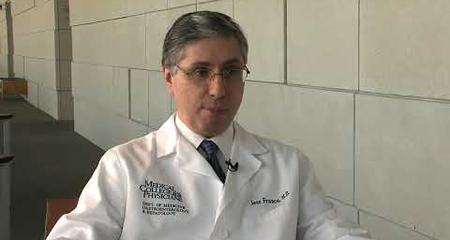Because the liver is made up of several different types of cells, several types of tumors can form within the liver. Some of these are cancerous and some are benign (not cancerous). These tumors have different causes and are treated differently. Below is a list of non-cancerous liver tumors treated by Froedtert & the Medical College of Wisconsin.
Benign (Non-Cancerous) Liver Tumors
- Hemangioma — the most common benign tumor of the liver. The tumors are abnormal blood vessels that grow by dilating. Most of these tumors do not cause symptoms and need no treatment. Some may bleed or cause pain and need to be removed.
- Focal nodular hyperplasia (FNH) — a benign growth of several cell types — hepatocytes (liver cells), bile ductules (small ducts) and Kupffer cells (specialized cells that ingest or destroy bacteria and debris in the liver). These tumors do not bleed or become cancerous. The tumors can be removed if they are very large, cause symptoms, or are located in unfavorable areas of the body where growth would be problematic.
- Adenoma — a benign growth of hepatocytes (liver cells). Many of these tumors do not cause symptoms, but they can rupture and bleed and can become cancerous. Therefore, this tumor is usually removed when it is found.
- Cyst — a cavity in the liver that contains fluid. Single or multiple liver cysts are common, especially with advancing age. While liver cysts are usually benign, a cyst may become enlarged or infected and require treatment because of symptoms.
- Other types of benign tumors include hamartomas, regenerative nodules and lipomas, which do not require treatment.
Testing and Treatment of Liver Tumors
Treatment of liver tumors depends on the type of tumor, the number of tumors their size and location. A liver biopsy, in which small pieces of liver tissue are removed for testing to see if cancer cells are present, is normally taken. A tissue sample may be obtained in two ways:
- Needle biopsy — local anesthesia is used to numb the skin where a small incision is made. A needle is inserted through the skin and into the liver, where a tissue sample is obtained. This is done with ultrasound or CT guidance.
- Open biopsies — These types of biopsies are usually done as part of another surgical procedure. The surgeon may surgically remove a small wedge of liver tissue for the tissue sample, or a core biopsy may be done. A core biopsy involves inserting a small hollow needle into the liver. The needle is advanced within the cell layers to remove a sample or core. A core biopsy is typically performed under imaging guidance.
If liver cancer is present, hepatologists consult with oncologists, radiologists, radiation oncologists, interventional radiologists, surgeons and other team members to develop an optimal treatment plan for each patient.
Recognized as High Performing by U.S. News & World Report
Froedtert Hospital is recognized by U.S. News & World Report as high performing in three adult specialties and 16 procedures and conditions, including gastroenterology and GI surgery.Virtual Visits Are Available
Safe and convenient virtual visits by video let you get the care you need via a mobile device, tablet or computer wherever you are. We'll assess your condition and develop a treatment plan right away. To schedule a virtual visit, call 414-777-7700.





